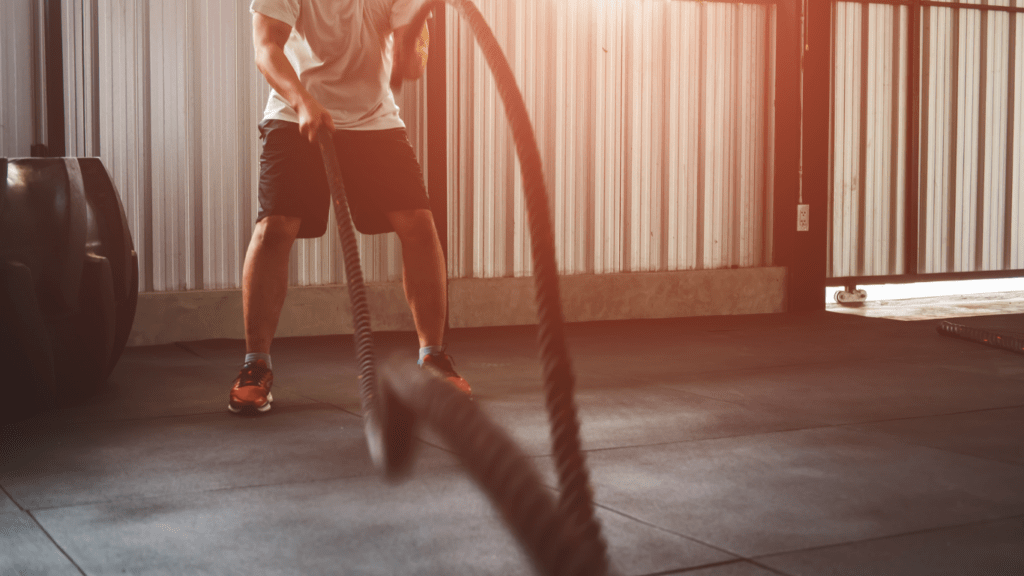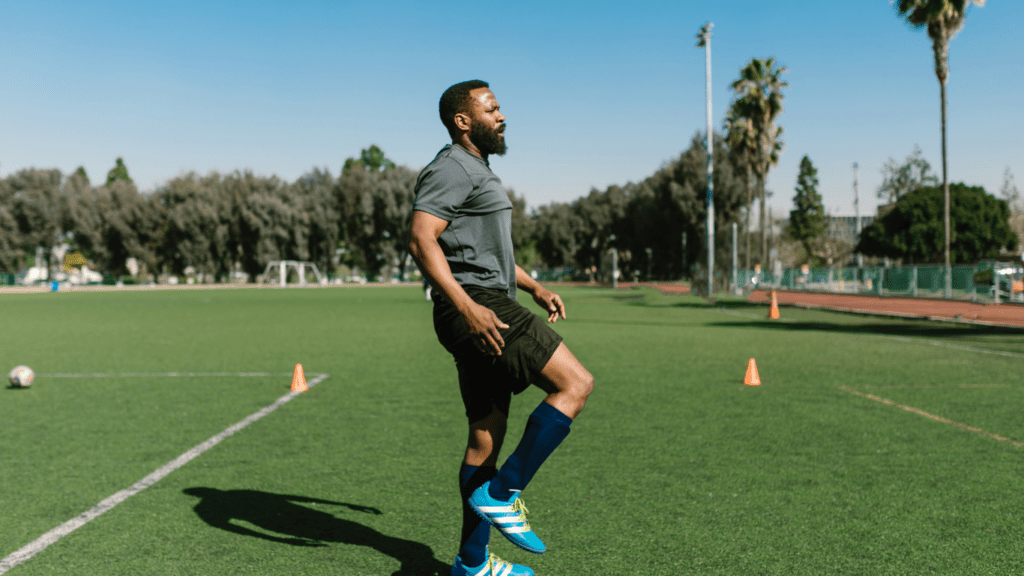As an athlete or coach, I’ve always found that success hinges on more than just talent and hard work. It’s about having a well-structured plan that guides training and performance throughout the season. That’s where periodization planning comes into play.
This strategic approach allows us to break down the training year into manageable phases, each designed to optimize performance and prevent burnout. By understanding the principles of periodization, I can tailor my training to peak at the right moments.
Whether it’s for a big competition or an entire season, this method not only enhances physical capabilities but also boosts mental resilience. Join me as we explore how to effectively structure your season for peak performance, ensuring you’re ready to tackle any challenge that comes your way.
Understanding Periodization Planning
Periodization planning plays a vital role in enhancing athletic performance. This methodical approach breaks training into specific phases, allowing athletes to prepare effectively for competitions.
Definition and Importance
Periodization refers to the systematic planning of athletic training. It divides the training year into distinct phases, each with specific objectives. This structure helps athletes prevent burnout, manage fatigue, and optimize peak performance at critical times.
Evidence shows that structured training reduces the risk of injury while improving overall fitness (Issurin, 2016).
Key Concepts of Periodization
- Macrocycle: The overall training period, typically spanning one year. This phase encompasses all training phases leading up to major competitions.
- Mesocycle: This sub-phase lasts several weeks to a few months, focusing on specific goals such as hypertrophy, strength, or endurance. Each mesocycle designs workouts tailored to progress towards the macrocycle’s objectives.
- Microcycle: The shortest training phase, ranging from one week to ten days. Microcycles include specific daily training sessions aimed at achieving short-term goals in line with mesocycles.
- Intensity: Refers to the level of exertion during training. It adjusts throughout the phases to manage fatigue and promote recovery.
- Volume: Represents the total amount of work performed. It’s manipulated in each phase to prevent overtraining and enhance adaptation.
- Recovery: Incorporating rest days and lighter training sessions. Recovery is essential for repairing muscle tissue and preventing burnout.
Understanding these concepts aids in creating a customized training program that addresses individual athlete needs while aligning with seasonal goals.
Types of Periodization Models
Understanding the different models of periodization helps athletes and coaches choose the best approach for their training needs. Here’s a breakdown of the three primary types.
Linear Periodization
Linear periodization involves gradually increasing intensity while decreasing volume over time. This model typically follows a sequential structure, starting with higher volume, lower intensity phases and progressing to lower volume, higher intensity phases.
An example would be beginning with 12 weeks focused on endurance conditioning, followed by 8 weeks aimed at strength development, and finally transitioning into a 4-week peak phase. This method suits athletes who benefit from a straightforward, structured approach, optimizing adaptation in a linear manner.
Non-Linear Periodization
Non-linear periodization, also known as undulating periodization, varies intensity and volume within shorter time frames, often weekly or even daily. This model promotes diverse training stimuli to prevent plateaus and enhance adaptations.
For instance, an athlete might focus on strength one day, switch to endurance the next, and then return to speed training later in the week. This flexibility accommodates athletes’ varying energy levels while encouraging continual improvement in multiple fitness components simultaneously.
Block Periodization
Block periodization divides training into specific blocks, each emphasizing particular physical qualities in a concentrated manner. Typically, this model consists of macrocycles designed around key performance metrics, such as strength, speed, or endurance, followed by recovery periods.
For example, an athlete might spend 3-4 weeks solely on strength training, then switch to a block focused on power, employing a more intense training load. This approach allows for in-depth development of certain skills while incorporating recovery time, enhancing overall performance when approaching competition phases.
Phases of Periodization Planning
Periodization planning consists of distinct phases that guide an athlete’s training throughout the season. Each phase has specific goals, enabling athletes to optimize performance effectively.
Preparation Phase
Preparation phase, often the longest segment, focuses on building a strong foundation for upcoming competition. This phase emphasizes increasing overall fitness, strength, and endurance. Specific objectives include:
- Base Training: Developing aerobic capacity through prolonged, lower-intensity workouts.
- Strength Development: Incorporating resistance training to enhance muscular endurance and strength, often using exercises such as squats and deadlifts.
- Technique Improvement: Practicing sport-specific skills to enhance coordination and efficiency.
During this phase, athletes adapt their bodies to higher training volumes while prioritizing injury prevention and recovery strategies.
Competition Phase
Competition phase aligns training with key performance events, ensuring athletes are in peak form. This phase includes strategic training adjustments, such as:
- Tapering: Gradually reducing training volume while maintaining intensity to allow for optimal recovery and peak performance.
- High-Intensity Workouts: Incorporating sport-specific drills and simulations to refine skills under competitive conditions.
- Mental Preparation: Engaging in visualization and strategy sessions to bolster competitive readiness.
This phase emphasizes maintaining fitness levels while ensuring athletes feel physically and mentally prepared for competition days.
Transition Phase
Transition phase serves as a recovery period following competition, allowing the body and mind to recuperate. Key components of this phase include:
- Active Recovery: Engaging in low-intensity activities such as swimming, cycling, or yoga to promote blood flow and healing.
- Rest and Reflection: Taking time off formal training to evaluate the season’s performance and set goals for the upcoming year.
- Rehabilitation: Addressing any injuries or strains sustained during competition to ensure readiness for the next cycle.
This phase is critical for long-term athlete development, allowing for physical and mental rejuvenation before resuming the preparation phase.
Implementing Periodization in Training
Periodization requires careful planning and execution in training. Adopting a structured approach leads to optimal performance and reduced injury risk.
Setting Goals and Objectives
Setting clear goals and objectives forms the foundation of any effective periodization plan. I identify long-term goals, such as performance metrics or competition success, and break them down into short-term objectives.
Specificity matters—each goal should be measurable, achievable, relevant, and time-bound (SMART). For instance, instead of stating a general intent to improve strength, I specify a target of increasing my squat by 10% within three months. This method provides direction and motivation throughout my training journey.
Tailoring Programs to Individual Needs
Tailoring programs to individual needs enhances the effectiveness of periodization. I assess an athlete’s current fitness level, injury history, and specific sport demands to customize training.
Understanding the athlete’s strengths and weaknesses helps in adjusting intensity, volume, and recovery strategies. For example, a sprinter might require a greater focus on speed and power, while a distance runner prioritizes endurance.
By aligning training programs with these unique profiles, I optimize performance and ensure a more personalized training experience.
Common Mistakes in Periodization Planning
I see several common mistakes that can derail effective periodization planning. Addressing these issues is crucial for ensuring peak performance while minimizing the risk of injury.
Overtraining and Undertraining
Overtraining and undertraining represent two ends of the spectrum that athletes often fall into. Overtraining occurs when I push my body beyond its recovery limits, leading to fatigue, decreased performance, and even injuries.
For example, consistently training at high intensities without adequate recovery can result in burnout. Conversely, undertraining fails to provide sufficient stimulus for improvement, leaving my performance stagnant.
I need to strike a balance by adhering to structured training phases, employing the right ratios of intensity and volume tailored to my needs, and continuously monitoring my body’s response for optimal results.
Ignoring Recovery
Ignoring recovery is another significant mistake in periodization planning. Recovery isn’t just passive rest; it’s an active process essential for performance enhancement. For instance, I often overlook the importance of scheduled recovery days, which can disrupt my training cycle.
Failing to incorporate recovery means my body can’t repair and adapt, leading to diminished gains and increased injury risk. I prioritize recovery strategies, such as deloading phases, active recovery workouts, and rest days, ensuring my body is prepared for subsequent training loads.
Proper recovery enhances overall adaptations and maintains training momentum.




